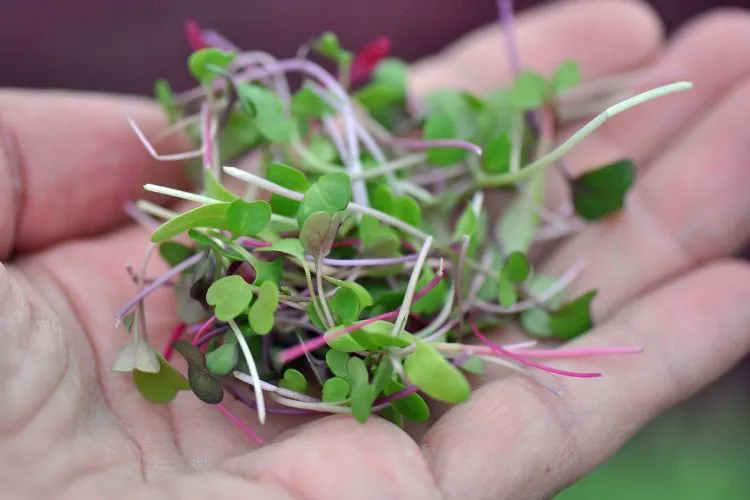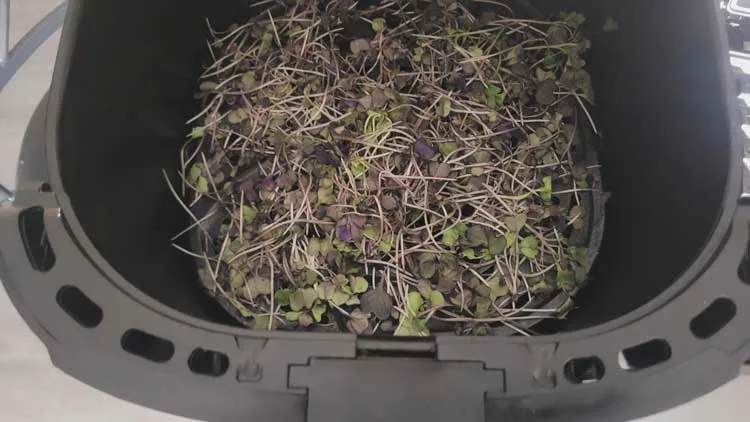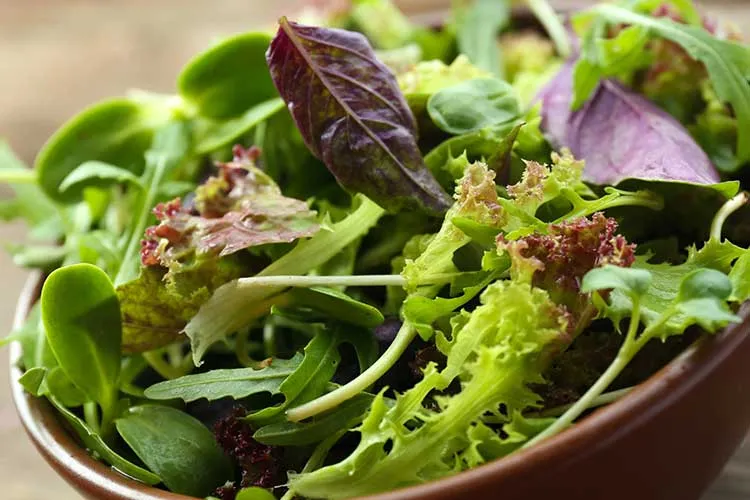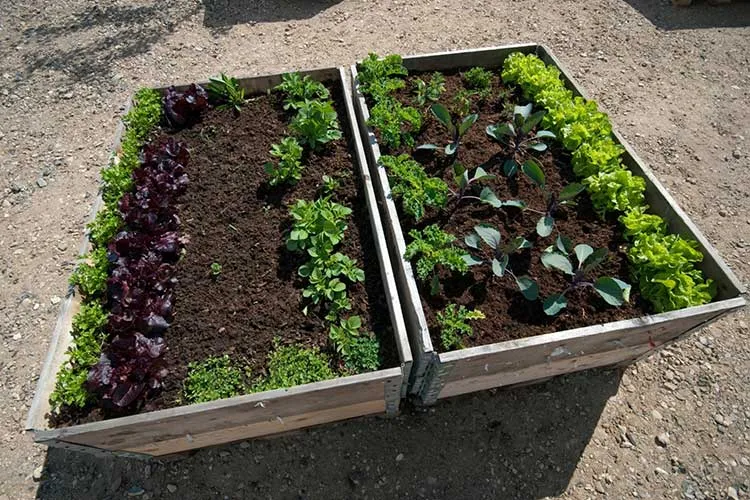Bean sprouts can go bad in at least 48 hours if stored incorrectly. Their high moisture content and fragile structure make them one of the fastest-spoiling ingredients in your fridge. You’re not alone if you’ve ever opened a container only to find slimy, sour-smelling sprouts. Most store-bought packaging speeds up spoilage.
Whether you eat them raw in salads or stir-fried in noodles, the key to keeping bean sprouts fresh longer is to rinse, store, and handle them properly from day one.
This guide breaks down what works based on real methods tested in everyday kitchens. There is no fluff, no guesswork, just clear answers that help you stop wasting sprouts and start getting the most out of every batch.
Understanding Bean Sprouts Storage
Bean sprouts spoil faster than many other vegetables, which can be frustrating if you hope to keep them around for more than a day or two. You might notice they turn slimy, start smelling sour, or lose their crispness almost overnight. This usually happens because sprouts are highly perishable and packed with moisture, which makes them an easy target for bacteria and mold. Even after harvesting, they’re still alive and breathing, which speeds up the breakdown process—especially if they’re left out at room temperature or kept in a sealed container without air circulation.
Why Do Bean Sprouts Spoil Quickly?
Bean sprouts have a high water content, creating the perfect environment for bacteria to grow if not stored properly. They’re also extremely delicate, so even small changes in temperature or humidity can cause them to spoil fast. Since they’re usually grown in warm, moist conditions, they carry a lot of surface moisture, and that moisture doesn’t hold up well once they’re packed into containers or plastic bags. If they’re kept in airtight packaging without ventilation, condensation builds up and speeds up rotting. Their thin skins and crisp texture also break down fast, especially when exposed to heat or light.
What Are the Benefits of Eating Bean Sprouts?
Bean sprouts are light, crunchy, and packed with nutrients. They offer a good source of vitamin C, folate, and protein while being low in calories. Eating them raw or lightly cooked gives your meals an extra crunch and freshness. Plus, they’re easy to digest and work well in many dishes.
Best Methods on How to Store Bean Sprouts
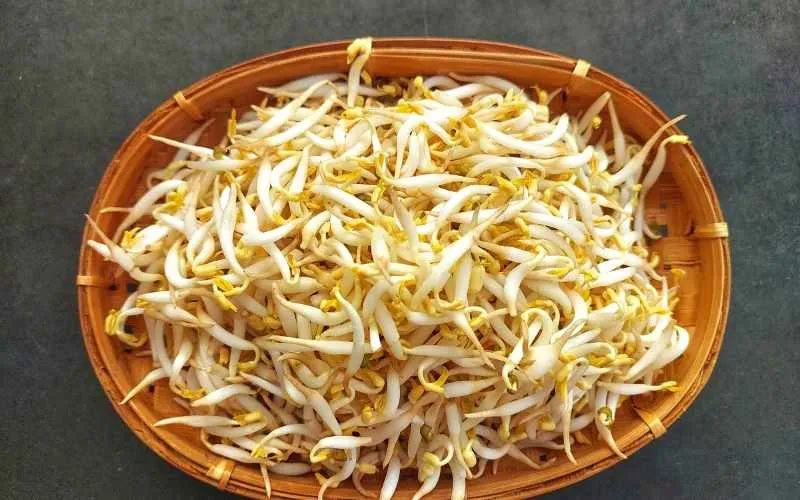
I’ve tested a few ways to keep bean sprouts from turning mushy after just a day or two. The first method I tried was keeping them in a bowl of cold water in the fridge. This one worked surprisingly well. As long as I changed the water daily, the sprouts stayed crisp for about a week.
The second method was wrapping them in paper towels and placing them in a sealed container. This also didn’t work—after about three days, the sprouts started to smell off. The towel got soggy quickly and held too much moisture.
The third method used a mesh-produced bag with a paper towel inside. I left the bag open in the fridge, and the airflow helped. This method kept them fresh for around five days with almost no effort. The cold water method took the most time out of all three, but it kept them fresh the longest.
The Easiest and Most Effective Way to Keep Bean Sprouts Fresh Longer
Use the cold water method if you’re short on time but still want crisp sprouts all week. Rinse the sprouts, place them in a container filled with cold water, and refrigerate. Make sure to change the water every day. You don’t need anything fancy—just a basic container with a lid works.
The cold water slows bacterial growth and keeps the sprouts from drying out. As long as you keep up with the water changes, they stay crunchy and fresh for up to a week. It takes only a minute each day and saves you from tossing out spoiled sprouts.
Which Method is the Best?
The cold water storage method outperformed the others in both freshness and shelf life. It’s a little more hands-on, but the results are worth it. Sprouts kept in water stayed crisp the longest and smelled fresh even after several days. It’s the most reliable option if you use sprouts regularly.
Proper Handling Tips for Bean Sprouts
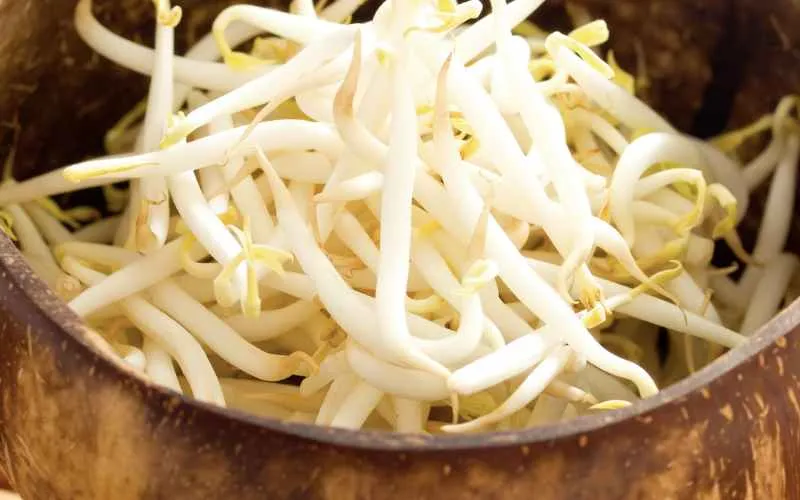
Handling bean sprouts the right way before storing them can greatly affect their longevity. Since they’re so fragile, even small actions like using clean hands or containers can help prevent early spoilage. Always rinse them first, especially if they come from a grocery store in a sealed plastic bag. That rinse helps remove excess starch and bacteria clinging to the sprouts. Use cool water and gently shake off the excess without bruising them.
Avoid keeping sprouts in the bag they came in—those often trap too much moisture. Transferring them right away into a clean container or bag lined with paper towels can improve their shelf life. You’ll also want to keep them away from strong-smelling items in the fridge, as sprouts can absorb odors quickly.
Temperature matters, too. Don’t store them near the fridge door where temperatures fluctuate. Instead, keep them on a middle shelf where it’s consistently cold. Also, don’t wash all your sprouts immediately if you’re not planning to eat them soon. Only rinse the portion you’ll use, and leave the rest dry until you need them. Small handling tweaks like these can keep your sprouts fresh and crunchy much longer.
Give Sprouts a Quick Rinse Before Storing
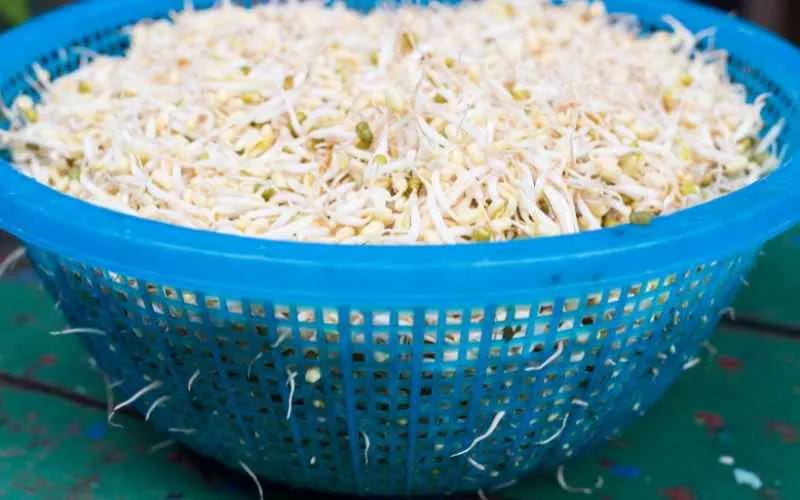
Always rinse bean sprouts in cold water right after bringing them home. This step washes off surface bacteria and helps reset their freshness. Don’t soak them—just a quick rinse and drain will do. After rinsing, let them air dry for a few minutes or gently pat them with a paper towel.
If they’re stored wet, excess water can lead to sogginess and spoilage. Once they’re dry, transfer them to your preferred storage method. A clean container or mesh bag works better than their original packaging. This extra step adds days to their shelf life without much extra effort.
A Better Way to Store Bean Sprouts
One trick that works well is storing the rinsed sprouts in a container with a small mesh strainer inside. Set the strainer in the container and place the sprouts inside it. Add a little cold water to the bottom of the container—just enough to touch the base of the strainer without submerging the sprouts.
This setup keeps them cool and moist without soaking them. Any extra water drains below, preventing that slimy texture. Change the water daily to keep bacteria away. With this method, your bean sprouts stay crisp for days and are ready to grab whenever needed.
Storing Bean Sprouts for the Long-Term
If you don’t plan to use your bean sprouts within a few days, storing them long-term gets tricky. They’re mostly water, so they don’t freeze well without some changes in texture. Still, if you’re okay with slight changes, there are ways to extend their shelf life. Freezing is one option, but blanching them first is key.
A quick one-minute dip in boiling water, followed by an ice bath, helps preserve some texture and kills bacteria. After blanching, drain the vegetables well and lay them out on a paper towel to remove excess moisture before freezing.
You can also vacuum seal sprouts before freezing, which reduces freezer burn and helps keep them usable for stir-fries or soups. Just know that once thawed, they won’t be crisp. They’ll soften quite a bit, so they’re best used in cooked recipes. If you eat sprouts raw, it’s better to stick with short-term methods and only freeze what you can’t finish in time.
Can You Vacuum Seal and Freeze Bean Sprouts?
Vacuum sealing bean sprouts before freezing helps prevent ice crystals and freezer burn, but it won’t preserve their crunch. Once thawed, they become soft and slightly mushy. Blanching the sprouts first improves their texture and safety for freezing. After blanching, dry them thoroughly, vacuum seal them in small portions, and label the bags with the date. They’ll be kept in the freezer for about two months, and they work best when added to hot dishes like stir-fries or noodle soups.
Can Bean Sprouts Be Frozen?
Freezing bean sprouts is possible, though their texture changes once thawed. If you want to freeze them, blanching is a must. Bring water to a boil, blanch the sprouts for about a minute, then quickly cool them in ice water. Once drained and patted dry, they’re ready to portion and freeze. Don’t expect the same crunch—they’ll come out softer but still usable in cooked dishes. Avoid freezing raw sprouts without blanching, as they turn watery and lose their bite.
Frequently Asked Questions About Bean Sprouts
How Long Do Bean Sprouts Last in the Fridge?
Stored properly, fresh bean sprouts can last up to a week in the fridge. They stay crisp longer when kept in cold water with daily changes or in a breathable container with a paper towel. Leaving them in sealed plastic traps moisture and usually causes spoilage within two or three days.
Should I Remove Bean Sprout Tails or Not?
Removing the tails is a personal preference. Some snip them off for a cleaner look and smoother texture in dishes, especially salads or spring rolls. However, the tails are safe and don’t affect the flavor. Leaving them on won’t hurt anything if you’re short on time.
How Do I Make Sure My Bean Sprouts Are Safe to Eat?
To reduce risk, rinse sprouts thoroughly before storing or cooking. If eating them raw, use the freshest batch possible and refrigerate them properly. For extra safety, consider cooking them lightly to kill any potential bacteria. Always check for sour smells or sliminess before eating, especially if stored for a while.
How Do I Know If Bean Sprouts Have Gone Bad?
Sliminess, a sour smell, or a grayish tint are all signs your sprouts have spoiled. If they feel mushy or smell off, toss them out.
Can You Eat Bean Sprouts Raw?
Eating raw bean sprouts is common, especially in salads or sandwiches. Ensure they’re fresh and well-rinsed since uncooked sprouts can sometimes carry bacteria.
Smart Growing Tips & Insight
What to Do with Sprouted Sweet Potatoes—Eat or Compost?
Sterilize Sprouting Jars: The Crucial First Step to Safe Sprouts
How To Freeze Brussel Sprouts Without Losing Flavor or Texture



